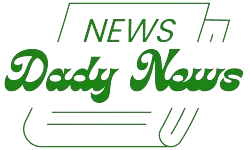At around the same time as personal computers were being released, childhood friends Bill Gates and Paul Allen established Microsoft. Allen was inspired by the 1975 Popular Electronics January feature of the Altair 8800 microcomputer. The Altair 800 microcomputer was essentially a ‘build your own computer’- it was aimed to make computing more accessible, not just for computer nerds (like geniuses Gates and Allen) but society at large. Allen realised the potential to write a program for the computer which could be used by the masses. Gates called the computer’s creator MITS and offered his and Allen’s services to create a BASIC (software language) program for the Altair. They had no such BASIC program written up (yet). They spent the next weeks writing up the program and delivered their product in early April to MITS. It was a mad rush as the pair realised that it was a race to be the first to create the software. MIT was impressed with the pairs work and agreed to distribute the program. Spurred on by their success, Gates and Allen created Micro-Soft a software company on April 4th 1975. The name was the combination of microcomputer and software.
Interestingly, it was IBM which gave Microsoft its big push into the mainstream. IBM hired Microsoft in 1981 to create an operating system. Two years later the Windows operating system was released. At the time IBM essentially monopolised the computer industry, so this deal legitimised Microsoft as a major software player. IBM’s agreement with Microsoft allowed Microsoft to license their software to other computer manufacturers which catapulted Microsoft into the mainstream.
These deals paved the way for Microsoft’s hugely successful public offering in 1986 leaving Gates with $310 million worth of shares. By 1994 Gates’ fortune grew to 9.35 billion, crowning him the richest man in the America! From their windows (1985) and Office (1990) operating systems which continues to be used (thank you word for letting me write this piece!), the internet explorer (1995), xbox (2001) and making their way into hardware with Microsoft surfaces (2012) — considered to be among the best computers -Microsoft remains one of the biggest players within the computer industry.
Gates and Allen’s were not the only ones to recognise the great potential of computing. In April (funnily the company was established on April’s Fool day) 1976, Apple was founded by Steve Jobs, Steve Wozniak and Ronald Wayne. Unfortunately for Ronald Wayne, he backed out of the deal and sold his 10
Apple’s first product, the Apple I, were designed and hand built by Wazniak. They were financed by Jobs selling his car and Wazniak selling his HP calculator. Just over a year later, the Apple II was introduced. According to legend, the Apple II along with the Commodore PET and Tandy TRS-80 were coined the “1977 Trinity” by Byte magazine (popular computer magazine). The Apple II had the ground breaking feature of being able to display colour! These three computers marked the beginning of marketing computers for households rather than solely businessmen or computer ‘nerds’ (we see Engelbart’s vision slowly coming to fruition).
In 1983 Apple released Lisa at a cost of 9,995 USD. The computer was revolutionary in having a GUI and mouse (alike the mother of demos by Doglus Engelbart). However, Lisa’s sophisticated software and applications were too much for its microprocessor which lead to lagging. Overall the Lisa was a failure for Apple, it was deemed too expensive and slow for business use and most potential costumers turned to the dominant IBM PCs. A year later Apple released its iconic Macintosh which was better marketed, cheaper and more user friendly, further undermining its Lisa sales. Even the Macintosh (which lives on todays as Apple’s Macs) was unable to prevet Apple’s loss of considerable market share in the 1990s to IBM whose computers ran the popular Microsoft windows software.
While today Apple is the second most profitable business in the world, it would be remiss of me to not mention Apple’s near demise. In 1997, Apple was near bankruptcy. Offering too many similar products each targeting a slightly different market and missing deadlines- Apple’s reputation, profit and market share plummeted. Jobs had left the company in 1985 due to low morale, tension between groups and politics. With the return of Steve Jobs as CEO in 1997, Jobs realised that dramatic changes needed to be made. For Macs to be taken seriously they needed to work seamlessly with the industry standard Microsoft applications. At the time Microsoft had a 90
The Time’s front cover in August 1997 showed an image of Steve Jobs saying to Bill,
“Bill, thank you. The world’s a better place.”
On face value it may seem as though Microsoft just invested (and saved) a competitor. However, the move was a smart play from Microsoft who were being sued by the Government for ‘monopolistic practices.’ At the time Bill Gates a now much adored tech icon and philanthropist was not so loved — but rather his company was viewed by many as too big.
As fellow Medium writer Jeremy Dyck explains in his article detailing this interesting dynamic, “what better way to show that Microsoft isn’t a monopoly than by literally propping up his competition?”
This is a much forgotten chapter in tech history — yet is an interesting one to note especially when today we see the issue of antitrust pop up once more now with Apple, Amazon, Google and Facebook under scrutiny (note Microsoft is absent…).
It is interesting to note the Apple marketing during this time. A famous stunt by Apple was the Macintosh test drive. To prove that anyone could easily learn to use a Macintosh, costumers could take a Macintosh home and ‘test drive it’ for the night. And who can forget the iconic 1984 Macintosh Commercial?? That depicts a dystopic grey era of brainwashed zombies shattered by the innovation of Mac. The advertisement ends with the statement “see why 1984 won’t be like ‘1984.’
https://cdn.embedly.com/widgets/media.html?src=https%3A%2F%2Fwww.youtube.com%2Fembed%2FVtvjbmoDx-I&display_name=YouTube&url=https%3A%2F%2Fwww.youtube.com%2Fwatch%3Fv%3DVtvjbmoDx-I&image=http%3A%2F%2Fi.ytimg.com%2Fvi%2FVtvjbmoDx-I%2Fhqdefault.jpg&key=a19fcc184b9711e1b4764040d3dc5c07&type=text%2Fhtml&schema=youtube
Apple’s marketing depicts the clear transition from the computer, an unattainable, foreign object, to the user-friendly computer for every and anyone.
Apple was among the first to recognise the two key consumers of the personal computers — knowledge workers and students, this was who Jobs marketed computers to.
Apple’s advertising indicated computers were here to make our lives and jobs easier and help us live a more effective and creative life. Keep this nice sentiment in mind. As we continue our analysis of computers we will uncover if there is any resounding truth to this lofty sentiment.












